 1. Celebrity Smile Makeovers
2. The Seven Myths of Teeth Whitening
3. Teeth Whitening: How White Is Too White?
4. Are Teeth Whitening Kiosks at the Mall Safe?
5. No Time for Teeth Whitening? 4 Tricks for Making Teeth Appear Whiter
6. Why Do I Have Tooth Sensitivity After a Filling?
7. Bad Breath…Top Three Causes
8. Can Sugar Free Gum Prevent Cavities?
9. “It’s Halloween! What Do I Do With All This Candy?”
10. The Truth About Porcelain Veneers
Which post did you learn the most from? Have you scheduled your dental appointment for 2012 yet?
Wishing you a healthy and prosperous New Year!
]]>
1. Celebrity Smile Makeovers
2. The Seven Myths of Teeth Whitening
3. Teeth Whitening: How White Is Too White?
4. Are Teeth Whitening Kiosks at the Mall Safe?
5. No Time for Teeth Whitening? 4 Tricks for Making Teeth Appear Whiter
6. Why Do I Have Tooth Sensitivity After a Filling?
7. Bad Breath…Top Three Causes
8. Can Sugar Free Gum Prevent Cavities?
9. “It’s Halloween! What Do I Do With All This Candy?”
10. The Truth About Porcelain Veneers
Which post did you learn the most from? Have you scheduled your dental appointment for 2012 yet?
Wishing you a healthy and prosperous New Year!
]]>
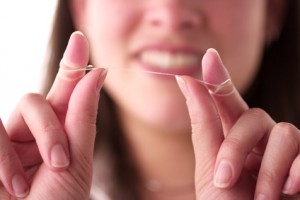 Picture this: You’re mere moments away from your regular dental visit, anticipating the question, “Have you been brushing and flossing regularly?” In an attempt to clean whatever might be lurking between your teeth before your hygienist or dentist catches you red-handed, you franticly brush and floss hours before your appointment. Once that dreaded questions comes, you give your answer, “Yes of course I do! All the time! I love flossing!,” but get the distinct feeling that they just don’t believe you.
So, how do we dentists know if you’ve been flossing regularly?
Being dentists, we can’t stress enough the importance of regular flossing in conjunction with brushing. Flossing is important to your gum and tooth health and when you don’t floss regularly, there are very apparent consequences.
The most obvious is inflammation between the teeth. When you don’t floss regularly, plaque, bacteria, and debris sit between the teeth causing inflammation. As a result, your gums start to look pink, puffy and inflammed and bleed easily.
The second give away is cavities forming between the teeth. Brushing your teeth, no matter how good and efficient you are at it, will not clean where the teeth meet. The only way to clean in that crucial spot is to floss. If you have any cavities or the beginning stages of cavities, it indicates that flossing is a weak point in your home care regimen.
Lastly, the biggest and most obvious sign that a patient is not flossing regularly is cuts or abrasions on the gums, indicating that the patient may have just flossed or isn’t doing it correctly or efficiently. If you aren’t careful and don’t know you’re way around your teeth and mouth, it will show.
The moral of the story is simple, make flossing a part of your daily regimen! The benefits to your oral health are tremendous.]]>
Picture this: You’re mere moments away from your regular dental visit, anticipating the question, “Have you been brushing and flossing regularly?” In an attempt to clean whatever might be lurking between your teeth before your hygienist or dentist catches you red-handed, you franticly brush and floss hours before your appointment. Once that dreaded questions comes, you give your answer, “Yes of course I do! All the time! I love flossing!,” but get the distinct feeling that they just don’t believe you.
So, how do we dentists know if you’ve been flossing regularly?
Being dentists, we can’t stress enough the importance of regular flossing in conjunction with brushing. Flossing is important to your gum and tooth health and when you don’t floss regularly, there are very apparent consequences.
The most obvious is inflammation between the teeth. When you don’t floss regularly, plaque, bacteria, and debris sit between the teeth causing inflammation. As a result, your gums start to look pink, puffy and inflammed and bleed easily.
The second give away is cavities forming between the teeth. Brushing your teeth, no matter how good and efficient you are at it, will not clean where the teeth meet. The only way to clean in that crucial spot is to floss. If you have any cavities or the beginning stages of cavities, it indicates that flossing is a weak point in your home care regimen.
Lastly, the biggest and most obvious sign that a patient is not flossing regularly is cuts or abrasions on the gums, indicating that the patient may have just flossed or isn’t doing it correctly or efficiently. If you aren’t careful and don’t know you’re way around your teeth and mouth, it will show.
The moral of the story is simple, make flossing a part of your daily regimen! The benefits to your oral health are tremendous.]]>
Thanksgiving is over and the holidays are rapidly approaching. If you’re stumped about what to get your loved one this holiday season here are our favorite holiday gifts and stocking stuffers!
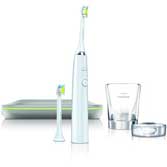 Sonicare Toothbrush: This is our number one favorite home care product and the perfect gift for the holidays. An electric toothbrush is a great way to care for your teeth and electric toothbrushes with sonic action are even better. With a built in timer that also gives a gentle reminder about when to switch to the next part of the mouth, you always know if you brushed your teeth long enough. And the sonic motion gives you a better overall clean. Available at many retailers including Target.com.
Sonicare Toothbrush: This is our number one favorite home care product and the perfect gift for the holidays. An electric toothbrush is a great way to care for your teeth and electric toothbrushes with sonic action are even better. With a built in timer that also gives a gentle reminder about when to switch to the next part of the mouth, you always know if you brushed your teeth long enough. And the sonic motion gives you a better overall clean. Available at many retailers including Target.com.

 A di Alessi Rondo Toothpaste Tube Cap and Floss Dispenser: We absolutely love these little guys. They’re fun and practical, which is why they’re one of our favorite stocking stuffers to give to friends and family members. You can find the Toothpaste Cap and Floss Dispenser on newegg.com.
A di Alessi Rondo Toothpaste Tube Cap and Floss Dispenser: We absolutely love these little guys. They’re fun and practical, which is why they’re one of our favorite stocking stuffers to give to friends and family members. You can find the Toothpaste Cap and Floss Dispenser on newegg.com.
 Purse-Sized Violight Slim Sonic Toothbrush: This is an adorable toothbrush for on the go. Slim and stylish, with eight different case styles, it’s a fun toothbrush that fits perfectly in your purse. Available on Amazon.com.
Purse-Sized Violight Slim Sonic Toothbrush: This is an adorable toothbrush for on the go. Slim and stylish, with eight different case styles, it’s a fun toothbrush that fits perfectly in your purse. Available on Amazon.com.
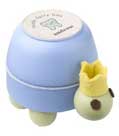 Personalized Turtle Tooth Fairy Box: This is a great gift for the children in your life. It comes in two colors, blue or purple, and can be personalized. Being a dentist, this is the first gift I gave my niece. And although she doesn’t have any teeth yet, it looks very cute on her dresser! This and other tooth fairy boxes are available on chasing-fireflies.com
Personalized Turtle Tooth Fairy Box: This is a great gift for the children in your life. It comes in two colors, blue or purple, and can be personalized. Being a dentist, this is the first gift I gave my niece. And although she doesn’t have any teeth yet, it looks very cute on her dresser! This and other tooth fairy boxes are available on chasing-fireflies.com
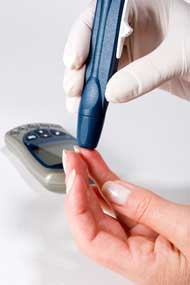 Diabetes is a serious disease that affects how your body processes sugar. Another aspect of the disease is a reduced resistance to infection and decreased or slower healing. It is estimated that around 20 million people have diabetes but more than half of those people are undiagnosed.
There’s a dental connection too. Because of the reduced healing and increased susceptibility to infections, people with diabetes are more prone to developing oral infections as well as periodontal disease, when compared to those without diabetes, a two-fold problem for diabetics.
Diabetics are more prone to periodontal disease, which is the chronic inflammation and infection of the gums and surrounding tissues. If left untreated, it can lead to irreversible destruction of the tissues and tooth loss. Also, serious periodontal disease has the potential to affect a diabetics blood sugar control which in turn reduces healing ability and further increases the susceptibility to infection.
Diabetes can also cause other oral problems such as thrush or candidiasis (a yeast infection in the mouth) and dry mouth. This can lead to soreness, ulcers, infections and cavities.
Diabetes is a serious disease that affects many aspects of our health. Its important to keep your blood sugar under control and see a physician regularly to maintain good health. Also, you should be seeing a dentist regularly to help keep your oral health pristine and aid in maintaining good overall health.]]>
Diabetes is a serious disease that affects how your body processes sugar. Another aspect of the disease is a reduced resistance to infection and decreased or slower healing. It is estimated that around 20 million people have diabetes but more than half of those people are undiagnosed.
There’s a dental connection too. Because of the reduced healing and increased susceptibility to infections, people with diabetes are more prone to developing oral infections as well as periodontal disease, when compared to those without diabetes, a two-fold problem for diabetics.
Diabetics are more prone to periodontal disease, which is the chronic inflammation and infection of the gums and surrounding tissues. If left untreated, it can lead to irreversible destruction of the tissues and tooth loss. Also, serious periodontal disease has the potential to affect a diabetics blood sugar control which in turn reduces healing ability and further increases the susceptibility to infection.
Diabetes can also cause other oral problems such as thrush or candidiasis (a yeast infection in the mouth) and dry mouth. This can lead to soreness, ulcers, infections and cavities.
Diabetes is a serious disease that affects many aspects of our health. Its important to keep your blood sugar under control and see a physician regularly to maintain good health. Also, you should be seeing a dentist regularly to help keep your oral health pristine and aid in maintaining good overall health.]]>
 We want to cover the topics that you really want to know about.
What’s the best way of finding these topics? Going directly to the source- our patients and readers!
Send us a question or topic that you would like us to write about and we’ll address it in one of our upcoming blog posts.
And of course, if you have any personal concerns, call us at our office: (212) 245-2888.]]>
We want to cover the topics that you really want to know about.
What’s the best way of finding these topics? Going directly to the source- our patients and readers!
Send us a question or topic that you would like us to write about and we’ll address it in one of our upcoming blog posts.
And of course, if you have any personal concerns, call us at our office: (212) 245-2888.]]>
 Smoking is not only bad for your heart and lungs but your mouth too.
Here are the alarming statistics:
Smoking is not only bad for your heart and lungs but your mouth too.
Here are the alarming statistics:
- Smokers are three times more likely than non-smokers to lose all their teeth. This figure has not changed from a decade ago.
- Smoking can result in periodontal gum disease, bad breath, staining of the tongue and teeth, delayed healing and complications with certain dental procedures, plaque build-up, and a diminished sense of taste and smell.
- About 28,000 people are diagnosed with oral cancer a year and 7,200 die from oral cancer each year.
- It has been reported by the Academy of General Dentistry that a one-pack-a-day smoking habit can cost you the loss of at least two teeth every 10 years. Smoking can also lead to seven times the risk of developing gum disease compared to non-smokers.
- About eight out in ten people with mouth and throat cancers are tobacco users. On average, 40 percent of those with the disease will not survive more than five years after being diagnosed, as quoted by the American Dental Association.
- According to the American Cancer Society, it is estimated that about 8 out of 10 oral cancers could be prevented by avoiding both tobacco and alcohol use. Many of the chemicals found in tobacco can damage DNA directly. Scientists are not sure whether alcohol directly damages DNA but they have shown that alcohol helps many DNA-damaging chemicals get into cells more easily. This may be why the combination of tobacco and alcohol damages DNA far more than tobacco alone.
How does botox really work? Botox acts on the muscle its injected into by relaxing and reducing the strength of contractions. It is a highly refined purified protein with absolutely no live bacteria that lasts approximately 3-6 months. As the effects of Botox wear off, strength gradually returns to the contraction of the muscle affected.
Therapy with Botox for Grinding, Clenching, and TMJ Disorder
Many people grind and clench their teeth and/or suffer from TMJ Disorder. Your teeth should only touch together approximately 30 minutes a day, for chewing and swallowing. People that grind and clench put their teeth together more then 30 minutes a day. The hyper-function of the muscles used to move the jaw and put the teeth together can lead to: excessive wear to the teeth, broken teeth, inflammation/hypertrophy of muscles used to move jaw, TMJ Disorder, and headaches. Treating a patient with Botox in combination with a night guard can significantly reduce the symptoms from hyper-function of these muscles.Gummy Smiles
Some patients have excessive gum tissue showing when they smile or talk. This could be due to excessive jaw growth, short upper lip, hyper-function of upper lip muscles, and/or altered gum tissue growth. Patients will sometimes go through gum or jaw surgery to reduce a “gummy smile.” An non-invasive alternative treatment option to treat “gummy smiles” is injecting botox into the upper lip muscles that produce a smile. By relaxing these muscles of facial expression with botox, the amount of gum tissue exposed when smiling is reduced.Wrinkles
Wrinkles are caused by muscles that fold the skin overlying. When the contraction of the muscles that cause facial
expressions are reduced, wrinkles are reduced or go away completely by allowing the skin to recover. Dentists are experts in the anatomy of the head/neck region and are excellent sources for injections in the area. An added benefit is that patients typically see the dentist for routine cleanings every 6 months, the perfect time to have the Botox re-done.
]]>
When the contraction of the muscles that cause facial
expressions are reduced, wrinkles are reduced or go away completely by allowing the skin to recover. Dentists are experts in the anatomy of the head/neck region and are excellent sources for injections in the area. An added benefit is that patients typically see the dentist for routine cleanings every 6 months, the perfect time to have the Botox re-done.
]]>
 It’s hard to resist eating the candy intended for the big day before Halloween actually arrives. Then there’s the question of what do you do with all the left over candy that wasn’t given out, or the haul from “Trick-or-Treating!”
Here’s our advice– Halloween is a fun time, so enjoy it. Just keep some of these tips in mind to help minimize the risk of getting cavities:
-Try to avoid really sticky candies like caramels and taffies. These types of candies typically get into the nooks and crannies of your teeth that are hard to clean.
-Give yourself or your child a set number of pieces of candy you can eat per day as to limit the sugar intake each day.
– Try and limit the number of times you expose your teeth to candy in a day. It is better to eat multiple pieces at once, rather than one piece at time, multiple times during the day.
– Try to brush and floss after snacking on candy.
– If you’re unable to brush and floss, try and drink water. Although it won’t clean all of the sugar away from your teeth and is not a guarantee that you won’t get cavities, it will help cleanse your mouth, helping to reduce the possibily of cavities. Sugar-free gum is also another good trick. Like water, it helps to remove residual sugar from your mouth, while also stimulating saliva flow. Saliva is a natural protector against cavities.
Happy Halloween!]]>
It’s hard to resist eating the candy intended for the big day before Halloween actually arrives. Then there’s the question of what do you do with all the left over candy that wasn’t given out, or the haul from “Trick-or-Treating!”
Here’s our advice– Halloween is a fun time, so enjoy it. Just keep some of these tips in mind to help minimize the risk of getting cavities:
-Try to avoid really sticky candies like caramels and taffies. These types of candies typically get into the nooks and crannies of your teeth that are hard to clean.
-Give yourself or your child a set number of pieces of candy you can eat per day as to limit the sugar intake each day.
– Try and limit the number of times you expose your teeth to candy in a day. It is better to eat multiple pieces at once, rather than one piece at time, multiple times during the day.
– Try to brush and floss after snacking on candy.
– If you’re unable to brush and floss, try and drink water. Although it won’t clean all of the sugar away from your teeth and is not a guarantee that you won’t get cavities, it will help cleanse your mouth, helping to reduce the possibily of cavities. Sugar-free gum is also another good trick. Like water, it helps to remove residual sugar from your mouth, while also stimulating saliva flow. Saliva is a natural protector against cavities.
Happy Halloween!]]>
 Miles away from home and in unfamiliar surroundings and it hits you– your previously perfect tooth has just shattered and is now throbbing uncontrollably. Now what?
Traveling in the US?
– First step, call your dentist, they may have some words of advice for your particular problem. Also, depending on your circumstances they may be able to call in a prescription if necessary or direct you to a nearby facility to help you.
– If your dentist is unavailable and you’re at a hotel, utilize your concierge or front desk staff. Often times they will have a list of people in the area that they have on call for emergency medical and dental situations.
– If neither options are available, contact the local hospital. Mostly likely a dentist or oral surgeon will be on call to help you with your emergency.
Traveling out of the Country?
– As previously mentioned, contact your dentist immediately. Unfortunately, he/she will not be able to prescribe you any medications overseas but may be able to give you advice on how to proceed. Also, check-in with your concierge for local resources as you would in the U.S.
– If you don’t feel comfortable with your hotel’s concierge or don’t have a great grasp of the language and resources available to accomodate you, you may want to contact services at the U.S. Embassy. They may be able to put you in touch with medical services and help with transferring funds from the U.S.
– We also advise you contact your insurance company before a trip abroad to see if there are any policies about coverage outside of the country.]]>
Miles away from home and in unfamiliar surroundings and it hits you– your previously perfect tooth has just shattered and is now throbbing uncontrollably. Now what?
Traveling in the US?
– First step, call your dentist, they may have some words of advice for your particular problem. Also, depending on your circumstances they may be able to call in a prescription if necessary or direct you to a nearby facility to help you.
– If your dentist is unavailable and you’re at a hotel, utilize your concierge or front desk staff. Often times they will have a list of people in the area that they have on call for emergency medical and dental situations.
– If neither options are available, contact the local hospital. Mostly likely a dentist or oral surgeon will be on call to help you with your emergency.
Traveling out of the Country?
– As previously mentioned, contact your dentist immediately. Unfortunately, he/she will not be able to prescribe you any medications overseas but may be able to give you advice on how to proceed. Also, check-in with your concierge for local resources as you would in the U.S.
– If you don’t feel comfortable with your hotel’s concierge or don’t have a great grasp of the language and resources available to accomodate you, you may want to contact services at the U.S. Embassy. They may be able to put you in touch with medical services and help with transferring funds from the U.S.
– We also advise you contact your insurance company before a trip abroad to see if there are any policies about coverage outside of the country.]]>
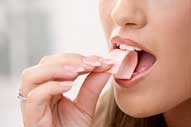 Have you ever wondered if the claims about certain sugar-free chewing gums are true and can in fact help prevent cavities? And, if so, why? Is it a special type of sugar, like xylitol, or is it from the process of just chewing gum?
There is a lot of research about the benefits of chewing sugar-free gum that shows chewing sugar-free gum for 20 minutes following meals does in fact help with the reduction of cavities. Although many studies do say that xylitol can help in reducing cavities, the largest reason why chewing sugar-free gum can help is because of the role it plays in producing more saliva.
When you chew sugar-free gum, there is no sugar present to be broken down in the mouth so there is no food for the bacteria that causes cavities to eat. The process of chewing gum increases the amount of saliva in your mouth. Saliva plays a huge role in keeping your mouth clean and healthy. By increasing the flow of saliva in your mouth, your teeth become more resistant to cavities by letting all the important ingredients to your saliva, such as calcium and phosphate, bathe your teeth and in turn strengthen tooth enamel.
So, it is true! Chewing sugar-free gum can help reduce your risk for cavities.
If you are able to chew gum and consume artificial sweeteners then remember, everything within moderation and be sure to look for chewing gum that has the ADA Seal of Acceptance on the back.
Have you ever wondered if the claims about certain sugar-free chewing gums are true and can in fact help prevent cavities? And, if so, why? Is it a special type of sugar, like xylitol, or is it from the process of just chewing gum?
There is a lot of research about the benefits of chewing sugar-free gum that shows chewing sugar-free gum for 20 minutes following meals does in fact help with the reduction of cavities. Although many studies do say that xylitol can help in reducing cavities, the largest reason why chewing sugar-free gum can help is because of the role it plays in producing more saliva.
When you chew sugar-free gum, there is no sugar present to be broken down in the mouth so there is no food for the bacteria that causes cavities to eat. The process of chewing gum increases the amount of saliva in your mouth. Saliva plays a huge role in keeping your mouth clean and healthy. By increasing the flow of saliva in your mouth, your teeth become more resistant to cavities by letting all the important ingredients to your saliva, such as calcium and phosphate, bathe your teeth and in turn strengthen tooth enamel.
So, it is true! Chewing sugar-free gum can help reduce your risk for cavities.
If you are able to chew gum and consume artificial sweeteners then remember, everything within moderation and be sure to look for chewing gum that has the ADA Seal of Acceptance on the back.
Source info: THE EFFECT OF CHEWING SUGAR-FREE GUM AFTER MEALS ON CLINICAL CARIES INCIDENCE BRADLEY B. BEISWANGER, D.D.S.; A. ELIAS BONETA, D.M.D., M.S.D.; MELISSA S. MAU, B.S.; BARRY P.KATZ, PH.D.; HOWARD M. PROSKIN, PH.D.; GEORGE K. STOOKEY, PH.D. September 12, 2011 Scientific Panel Issues Evidence-Based Clinical Recommendations: Sugar-Free Polyol Gum, Lozenges and Hard Candy, Nonfluoride Varnishes Help Prevent CavitiesRecommended in conjunction with fluoride for patients at high-risk for developing cavities Non-fluoride caries preventive agents Full report of a systematic review and evidence-based recommendations A Report of the Council on Scientific Affairs 5/24/2011
]]>Frangella Dental
Offering advanced techniques in Cosmetic and General Dentistry in New York City.
200 W. 57th Street, Suite 1405
New York, NY 10019
(212) 245-2888
care@drfrangella.com
